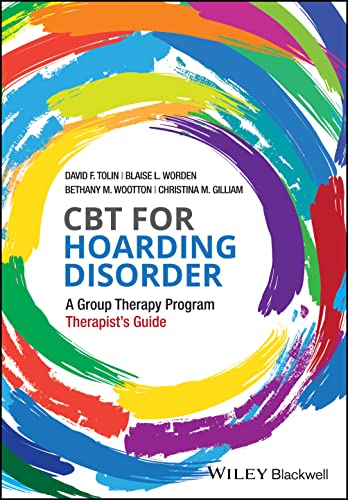CBT for Hoarding Disorder
A Group Therapy Program Therapist's Guide
David F. Tolin; Blaise L. Worden; Bethany M. Wootton; Christina M. Gilliam
BOOK REVIEW

In a world where our material possessions can easily engulf us, CBT for Hoarding Disorder: A Group Therapy Program Therapist's Guide emerges as a beacon of hope, illuminating the dark corners of mental health that often remain shrouded in stigma and misunderstanding. Authored by leading experts David F. Tolin, Blaise L. Worden, Bethany M. Wootton, and Christina M. Gilliam, this groundbreaking resource does more than simply outline a therapy program; it challenges you to confront the barriers we erect around our lives through an overwhelming tide of belongings.
If you've ever felt the weight of clutter-both physical and emotional-this book proves it's not just your struggle. It articulates the anguish of those who hoard, providing empathetic insights and practical strategies rooted in Cognitive Behavioral Therapy (CBT). The authors recognize that hoarding isn't merely about the accumulation of objects; it's a complex psychological issue that entwines identity, anxiety, and trauma. They delve deeply into the underlying emotional turmoil that drives this behavior, implicating not just the individual but society at large.
The guide intricately weaves compelling case studies with actionable therapeutic techniques, allowing healthcare professionals to foster support groups that can become lifelines for their clients. The structure of the program, meticulously designed, offers a step-by-step approach tailored to the unique needs of individuals grappling with hoarding disorder. You are invited to not just read but to feel the tension and triumphs depicted within the sessions. Each page is a testament to resilience, illustrating that recovery is a journey rather than a destination.
Readers' feedback on this transformative work has been overwhelmingly positive, with many highlighting how Tolin and his colleagues have demystified hoarding. Critics, however, note that the book presents a clinical perspective that may overlook the deeply personal narratives involved-a valid point that reinforces the idea that while creative methodologies shine light on treatment, individual experiences continue to vary tremendously.
Yet, isn't it the raw storytelling-the shared experiences-that connects us? This book takes a daring leap into therapeutic practice, proving that understanding can be a transformative tool-but only if we embrace its complexities. The authors do not shy away from uncomfortable truths; rather, they arm therapists with the knowledge needed to support their clients in the messy, often chaotic road to recovery.
As the readers immerse themselves in this guide, they are prompted to reflect not only on the role of hoarding in their patients' lives but also on societal pressures that shape these behaviors. The increasing number of "hoarding shows" on television, as entertaining as they may be, often trivialize a serious mental health issue. Tolin et al. challenge you to go beyond entertainment-to feel compassion, to invoke action, and to understand the vulnerability that accompanies such a struggle.
In the realm of mental health resources, CBT for Hoarding Disorder serves as a wake-up call. It is a reminder that the clutter in our lives often reflects the chaos of our emotional worlds. Those who overlook the significance of this text do so at the risk of ignoring a valuable key to personal growth and understanding.
This guide is not merely a treatment manual; it is an invitation to change our perception of hoarding and the individuals who experience it. It compels you to acknowledge the humanity behind the disorder, embracing compassion over judgment, and in doing so, perhaps rediscovering a piece of yourself in the process. Don't let this opportunity slip through your fingers-seize the chance to truly engage with the voices within these pages and witness the transformation that awaits you.
📖 CBT for Hoarding Disorder: A Group Therapy Program Therapist's Guide
✍ by David F. Tolin; Blaise L. Worden; Bethany M. Wootton; Christina M. Gilliam
🧾 208 pages
2017
#hoarding #disorder #group #therapy #program #therapists #guide #david #tolin #DavidFTolin #blaise #worden #BlaiseLWorden #bethany #wootton #BethanyMWootton #christina #gilliam #ChristinaMGilliam